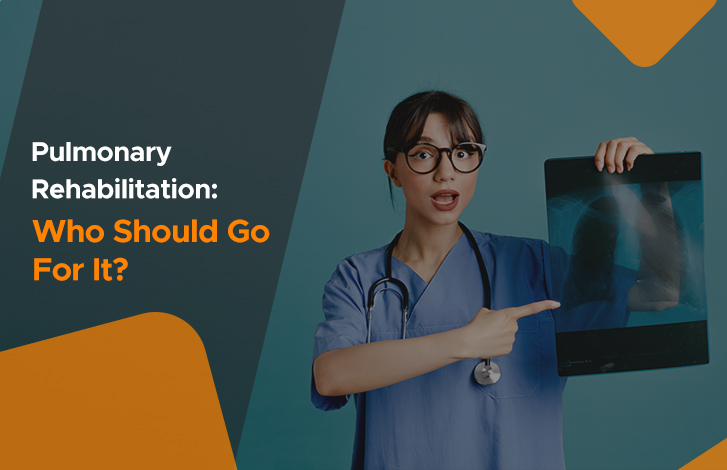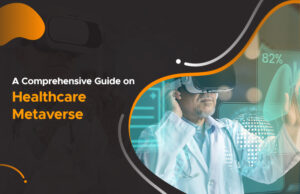If you or someone you know suffers from chronic lung disease, you might have heard of Pulmonary Rehabilitation. Attending a pulmonary rehabilitation (PR) program can be a lifesaver for patients with chronic lung disease as it can decrease hospitalizations, control symptoms, complications, oxygen use, and medication use. Still, most importantly, it can help individuals breathe better and live better. In this article, you will learn more about pulmonary rehabilitation and who can seek this program.
What is Pulmonary Rehabilitation?
PR can be defined as “a comprehensive program based on a thorough patient assessment followed by patient-tailored therapies that include, but are not limited to, exercise training, education, and behavior change, designed to improve the physical and psychological condition of people with chronic respiratory disease and to promote the long-term adherence to health-enhancing behaviors.”
If you have a lung condition such as chronic obstructive pulmonary disease (COPD), you may benefit from pulmonary rehabilitation. It is tailored to the needs of patients, with the aim of helping them achieve a well-functioning respiratory system, thereby increasing their quality of life. Pulmonary Rehabilitation has vastly improved exercise capacity in individuals with COPD as compared to usual care.
According to studies, PR is beneficial for people with mild to severe COPD. Although it is unknown whether these advantages persist after this time period, people with COPD who receive PR are likely to use healthcare services more efficiently during the next 12 months.
What Happens During Pulmonary Rehabilitation?
PR campaigns can last anything from six to eight weeks to a year. They can be based in the community, a hospital, or both. A typical session involves a group of COPD patients attending a class where they engage in supervised exercise under the supervision of a physiotherapist. They then participate in an educational session with a teacher on a variety of subjects, including managing COPD, using bronchodilators, nutrition, stress, and anxiety.
These programs may be different for every individual. The professionals in charge of your pulmonary rehabilitation may include nurses, respiratory therapists, physical therapists, occupational therapists, psychologists, dieticians, social workers, spiritual counselors, and/or doctors. You will speak with the staff individually as well as in groups. They will work with you to create a customized program.
It all depends upon the available resources, but in general, you will:
- Have an assessment. A nurse, respiratory therapist, exercise physiologist, or other healthcare professional will conduct your assessment. Following a pulmonary function test to evaluate your breathing and a walking test to determine how far you can go in six minutes, you might undergo a stress test that checks your blood pressure, heart rate, and oxygen saturation levels.
- Study topics that will assist you in managing your long-term lung condition.
- Discover exercises to help you feel better and accomplish more.
- Gain knowledge on how to manage your chronic lung condition mentally and emotionally.
- Discover the most suitable things to eat and how much weight to maintain.
Who Should Get Pulmonary Rehabilitation?
Now the question that arises next is: What kind of people can take Pulmonary Rehabilitation? Anybody who has a chronic lung condition may gain from pulmonary rehabilitation. Chronic lung problems include, for example:
- Emphysema and chronic bronchitis
- Pulmonary fibrosis and sarcoidosis.
- Lung cancer surgery and lung cancer.
- Surgery to reduce lung capacity both before and after a lung transplant.
- Asthma.
- Cystic fibrosis.
- Hypertension in the lungs.
What Are the Benefits of Pulmonary Rehabilitation
Patients with chronic pulmonary diseases often face the issue of weak muscles. It is necessary to rebuild the strength in the muscles used for breathing and movement. With the help of a Pulmonary Rehabilitation program, you can get a personalized fitness plan made to increase your stamina and strength, and you will get to learn more about your illness or condition. It will also teach you important strategies like symptom management, techniques to handle breathing difficulties, the effect of medication, the use of home medical equipment, tips to make good nutritional choices, weight management, and overall health.
It also teaches you breathing exercises like pursed lip breathing, yoga breathing, or computer-assisted feedback. Especially when you are physically active or under stress, you may better control your breathing and prevent feeling out of breath by using these tactics. You might also learn how to get rid of lung mucus.
Your healthcare provider will create a strategy for the exercise sessions that considers all of your needs, skills, and shortcomings. Stretching is a good place to start before using a treadmill or stationary bike. You could even increase your strength by lifting small weights. Many pulmonary rehabilitation programs offer counseling or support groups, stressing the importance of mental health.
Conclusion
Pulmonary rehabilitation is promising for patients with chronic lung diseases. With pulmonary rehabilitation, you might discover that the exercises and breathing strategies you learn will prevent you from running out of breath doing simple chores or mild exercise. Like any therapy, its effects last longer if you continue the exercises and apply the tips you have learned from the sessions. In order to recover sooner, stick to the plan given by your provider!







